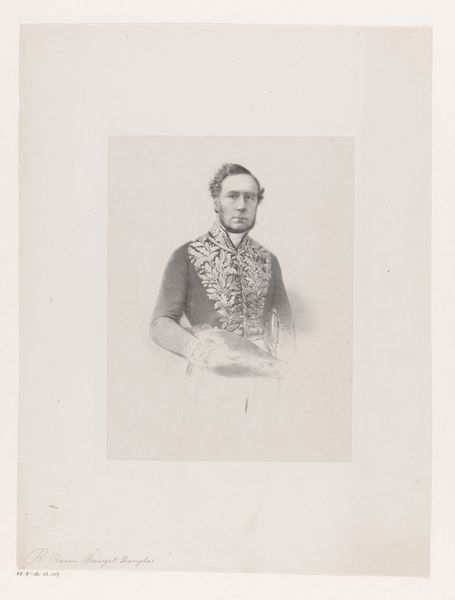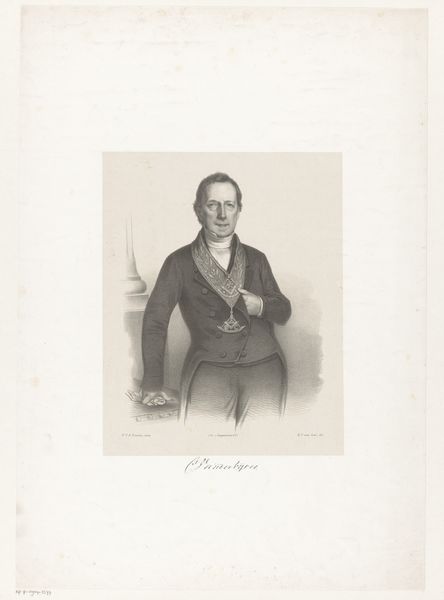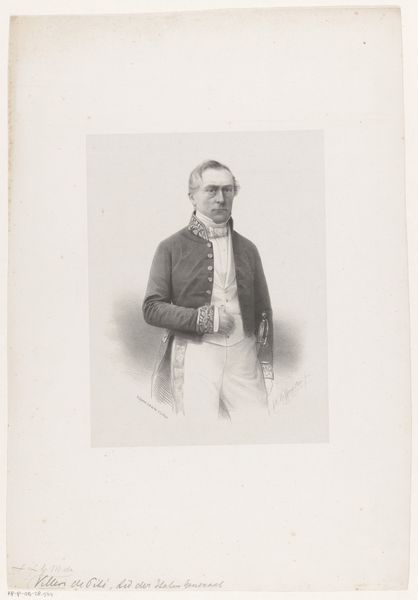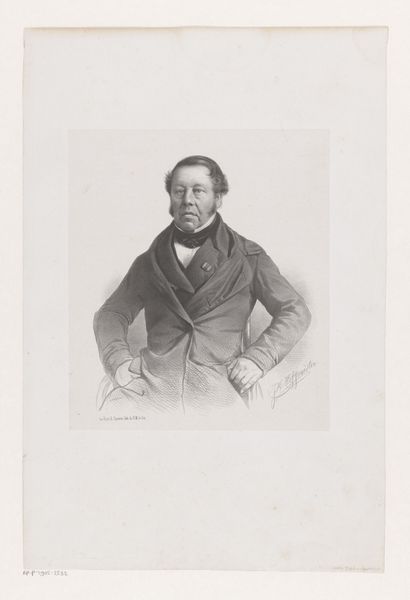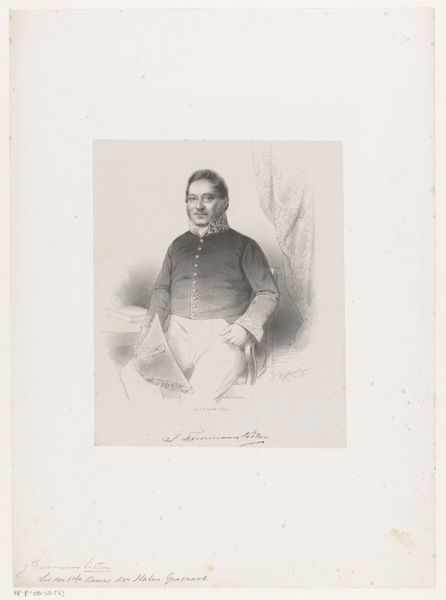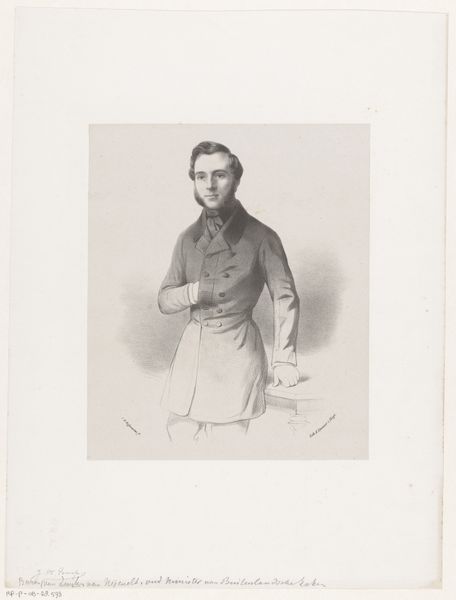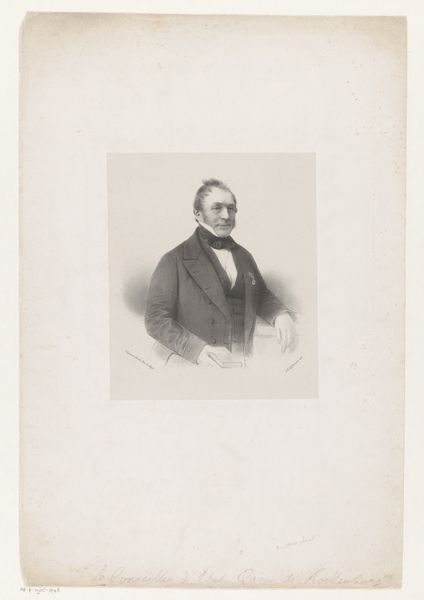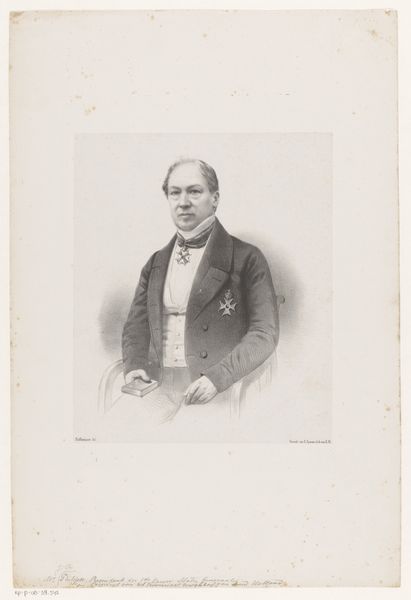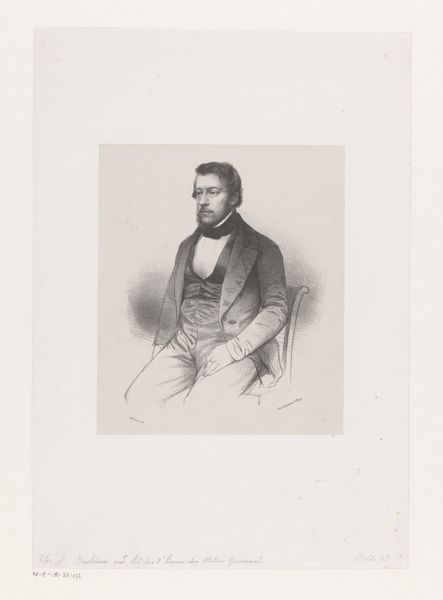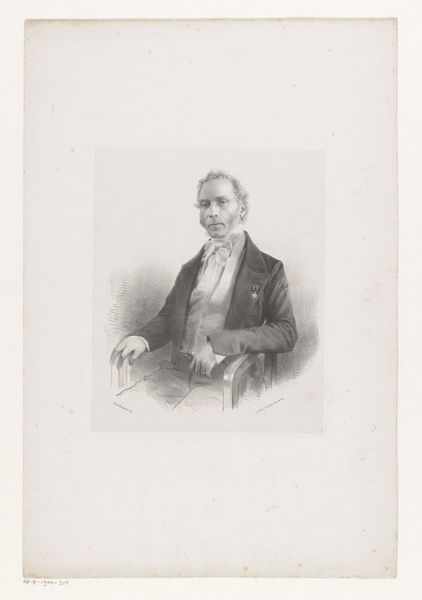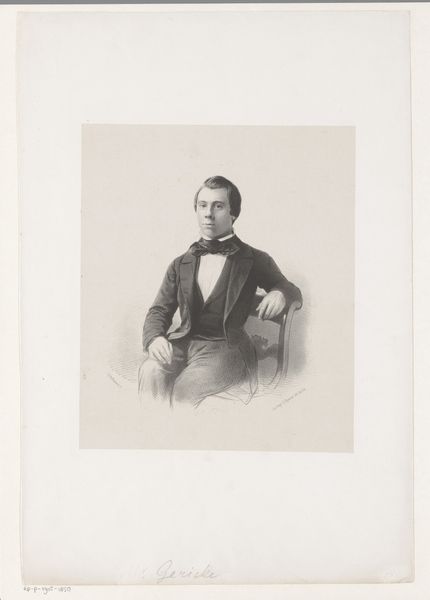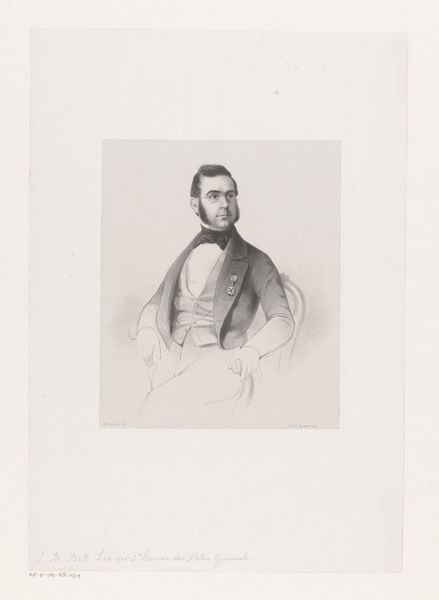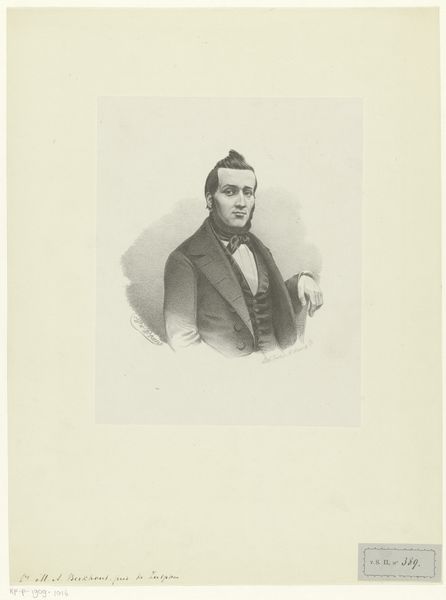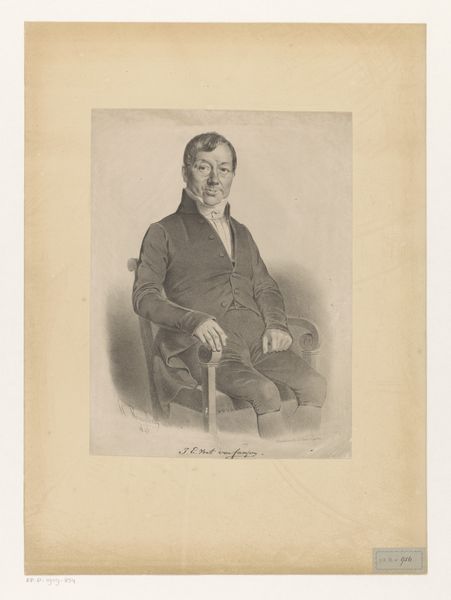
print, engraving
#
portrait
#
16_19th-century
# print
#
engraving
#
realism
Dimensions: height 425 mm, width 292 mm
Copyright: Rijks Museum: Open Domain
Curator: This is a print entitled "Portret van P. Jekel," dating from around 1851 to 1883, crafted by Johan Hendrik Hoffmeister. Editor: My first impression is of constrained elegance. The severe monochrome tones emphasize the formality of the subject, but I find the swirling lines used for shading and the detailed textures on the uniform give the composition an energy that tempers that sternness. Curator: Indeed. P. Jekel served as the Resident of Meester Cornelis, a position of high authority in the Dutch East Indies. Prints like these served an important function in visually representing authority and social hierarchies during that period. Reproducing an image and circulating it through printmaking served as a tool of empire. Editor: You see how the formal realism enhances his authority, particularly with its tight lines around the jaw? Also the stark contrast emphasizes the layered textures and patterns, drawing the eye. His stance, the grip on the hat, it all contributes to a composition that feels deliberate and self-assured. Curator: Portraits, disseminated through prints, were vital in forging a sense of connection between colonial administrators and the distant populations they governed. This wasn't just about aesthetics, but about solidifying the presence of the colonial administration. How power was represented mattered profoundly to social order and political control. Editor: Though I wonder, do the swirling details take away from the realism, in that sense? Maybe suggesting something softer under all the control you mention? Curator: That's a fine point, especially as the piece comes across as both a formal display and something that invites curiosity regarding the sitter. Editor: This contrast is precisely where I see the image resonating: not just as an instrument of power, but a point where authority meets something altogether more human, accessible even. Curator: Considering the history and formal elements together deepens our grasp on just how this art fulfilled various social functions at the time. Editor: A fascinating piece which reminds us to view each work of art not just for its beauty, but for its reflection of human aspiration and expression.
Comments
No comments
Be the first to comment and join the conversation on the ultimate creative platform.
